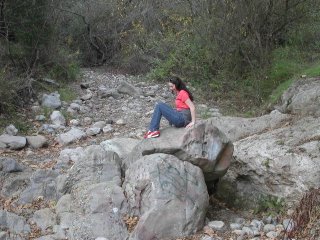
"it is this speceis [sic] that extends itself into all the rivers and little creeks on this side of the Continent, and to which the natives are so much indebted for their subsistence."
-Meriwether Lewis,
Journal March 13, 1806This very fat hen coho/silver salmon took a red and silver tinsel streamer on the incoming tide of the Valdez Arm of the Prince William Sound this morning. She was on her way to a fresh water stream to deposit her many thousands of eggs, but she was fattening up for the final stage of her migration. Very soon, she would have stopped eating for the rest of her life to focus on finding a suitable mate and nest. Then she would have stayed by her nest, violently defending her eggs from danger, until her body began to deteriorate. The decaying process begins for a salmon while it is still alive. First, she would have turned a dark red while her fins frayed. Then the red would have darkened to black and the black would have faded to gray and then to white as her movements became less and less purposeful. The current would have become her greatest obstacle to guarding her eggs. Small pieces of her soft, white flesh would have peeled away and washed downstream. The white mold on her head would have grown over her eyes so she would have appeared to have no eyes at all. Still, she would have hovered by sense of smell over her nest until her muscles had rotted so much that she would have sunk to the bottom and laid over her nest until she died completely. Then her many thousands of eggs would have hatched, and the alevins would have stayed under the gravel nest she built until they were strong enough to enter the current and partake in the nutrient rich smorgasbord that had once been their mother's body. One of those hatchlings would have returned in four years to provide the same protection and nourishment for her own offspring.
But she decided to have one last meal of red and silver tinsel.
She tasted great with salt, pepper, dried dill weed, and olive oil.
















 "We waded so gently and reverently, or we pulled together so smoothly, that the fishes of thought were not scared from the stream, nor feared any angler on the bank, but came and went grandly, like the clouds which came and went on the western sky, and the mother-o'-pearl flocks which sometimes form and dissolve there."
"We waded so gently and reverently, or we pulled together so smoothly, that the fishes of thought were not scared from the stream, nor feared any angler on the bank, but came and went grandly, like the clouds which came and went on the western sky, and the mother-o'-pearl flocks which sometimes form and dissolve there."